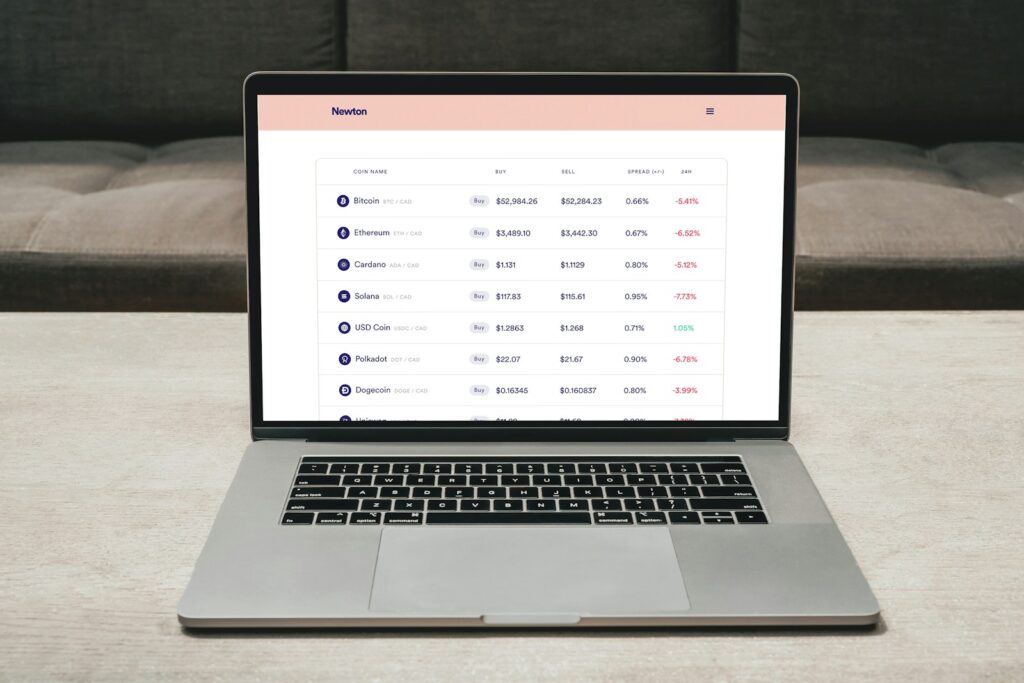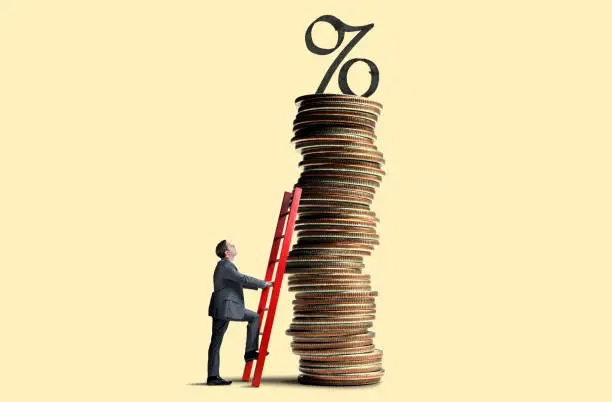Probably the most important actor in the economy, and hence for your investment portfolio, is the interest rate. Whether you are a seasoned investor or an amateur, knowledge about how they affect your investments can be to your advantage in making better decisions and optimizing your financial strategy.
This general guide will be walking you through interest rates and how they are associated with different kinds of investment opportunities, and you’re going to be learning very practical advice in real life about how to navigate it all to meet your financial goals.
What Are Interest Rates?
The interest rate is the cost of borrowing money or return on saving, measured as a percent. The main determinants of these interest rates are of course the central banks of each economy; for example, in the case of the United States, these are set by the Federal Reserve, who set these interest rates to control inflation or stimulate the economy when necessary or even slow down the economy if the situation demands.
In total, there are three primary interest rates you should be aware of:
- Federal Funds Rate: that is the rate at which one bank lends overnight to another. This will directly determine the interest rate in other parts of the economy.
- The Prime Rate: The rate that commercial banks charge off on its best customers, usually 3% over the federal funds rate.
- Mortgage Rates: The rate charged on home mortgages. So, this is related to the federal funds rate, bond yield, and demand in the market.
- Saving Account Rates: Savings accounts have a rate paid on them; when the federal funds rate is relatively low, this rate is usually lower.
But keep in mind that these rates directly affect the cost of your borrowings, returns on your savings, and how well your investment portfolio will perform.
The Direct Impact of Interest Rates on Investing
Interest rates can affect investments differently, depending on the type of investment. Let’s see how changes in interest rates may directly affect a couple of common types of investments:
1. Bonds
Generally, bonds can be considered as loans by investors to firms or governments. Here, the borrower will pay interest over a predetermined period of time. The higher the interest rates, the less attractive outstanding bonds that offer a lower rate of interest become, lowering its price.
This is the case because newer bonds issued at high rates are seen to be offering better returns hence lower demand for the older, lower-yielding bond. In this case, when interest rates decline, the prices of the bonds increase with this being a result of the fact that the existing bonds with high rates are more valuable.
Key Takeaway: In a positive interest-rate environment, there are more bonds or bond funds short-term because the yields move less against changes in the rate. In contrast, there is more available return for longer-duration bonds in a negative interest-rate environment.

2. Stocks
Interest rates are not a good measurable and perhaps a more complicated factor influencing shares. When interest rates go up, that actually means a company faces higher costs of borrowing and may, through this effect, experience reduced profit margins and slower growth.
To the same extent, high rates also make consumers spend less, hence lowering the revenues realized by companies. Again, if the interest rates go up, bonds now become a more preferable form of fixed income investment that is now no longer attractive. As investors make moves from stocks in order to place their savings in bonds, it is a negative implication on the stock market.
But all equities are not the same. For instance, sectoral equities of the financial sector include banks and other insurance companies that are likely to be operated under a higher rate because their lending margins are very much on the rise. Other examples include utility and real estate companies, which borrow very intensely, whose stocks decline at such times.
Key takeaway Diversify your stock investing to include sectors that remain strong in different interest rate scenarios. They prefer growth stocks when rates are low, and value stocks when the rates are high.

3. Real Estate
Real estate investments are very sensitive to interest rates. Higher interest rates increase the cost of mortgages, hence increasing lower affordability for potential buyers and slowing the sales of those properties.
This brings down the property value as well as the rental income, thus bringing down the real estate investment trusts and property value.
It is cheap to borrow when the interest rates are low compared to the usual. Increased demand for house as well as commercial property increases the value of the properties coupled with the increased rental income keeping the real estate investors in good moods.
Thus, this interest rate trend needs to be observed before investing in real estate. Low interest rates give room to purchase property and high interest rates are a red signal in the market for real estate.
4. Commodities
Other commodities such as gold, silver, and oil are believed to be an inflation hedge. Due to the low interest rate, the carrying cost of holding non-yielding assets such as gold reduces. Hence, people will tend to hold gold and thus forth.
However, in the case of higher interest rates, it will raise the cost of carry on the same commodities. Thus, it is expected to shift the price down.
Important takeaway: Add commodities to your portfolio as an inflation hedge in low interest rates. Focus on income-yielding assets in high interest rates.
5. Savings Accounts and CDs
The savings account and CDs are a low-risk return. As the interest rates rise, it makes the returns from the savings account and CD attractively sure.
On the other hand, when the interest rates are low, returns from the savings accounts are a little bare as investors will look forward to prominent returns that are high-risk. Conclusion
Things to Learn What you should include in a well-diversified portfolio Savings accounts and CDs. Savings accounts and CDs can be wonderful tools for generating a regular income flow when interest rates are elevated. If interest rates are low, you should save money in an asset with a greater growth rate.
How to Navigate Changing Interest Rates
While having a sense of how interest rate changes will affect returns from various investments is helpful, the more critical knowledge may be how to handle an ever-changing rate environment. Here’s how:
1. Diversify Your Portfolio
Diversification is indeed one of the best ways for controlling risks in almost every type of market environment. Spreading your investments into more than one asset class, including stocks, bonds, real estate, or commodities, can help reduce the effect that interest rates may have on your portfolio as a whole.
For example, keeping investments that have a higher chance of performing well in specific interest-rate settings helps align the risks and returns more closely.
2. Focus on Quality
In a rising interest rate environment, focus on high-quality investments. For bonds, this means looking for those with strong credit ratings and shorter durations.
For stocks, consider companies with strong balance sheets, low debt levels, and consistent earnings. Quality investments are more likely to withstand the challenges of higher borrowing costs and reduced consumer spending.
3. Consider Floating-Rate Investments
Floating-rate investments, such as floating-rate bonds or bank loans, can offer protection in a rising interest rate environment. These investments have interest payments that adjust based on changes in interest rates, providing a potential hedge against rising rates.
While they may offer lower returns than fixed-rate investments, they can help stabilize your portfolio when interest rates are climbing.

4. Review Your Debt
It means higher interest rates paid for loans. If you have variable-rate loans or credit cards now is the time to enjoy this situation and take advantage of refinance to a fixed-rate loan since rates are low.
This will protect you from high interest costs and your regular payments will become predictable. The money paid out to clear outstanding balances frees up your free cash flow to save you from being burdened with rising rates on your debt load.
5. Monitor Economic Indicators
Monitor all the economics indicators which would affect the interest rate, such as inflation, employing data and growth in GDP. This is because of this indicator that a change in monetary policy gets mutually agreed upon by central banks and leads to the change in the interest rates as well.
It will also give you quite a clear indication of shifting interest rates, which, in turn, gives you the room to shift your investment strategy according to those changes.
6. Stay Informed and Seek Professional Advice
Interest rates and their impact on investments can be complex. Staying informed about market trends, economic conditions, and policy changes is essential for making sound investment decisions.
Consider consulting with a financial advisor who can provide personalized advice and help you develop a strategy that aligns with your financial goals and risk tolerance.

Long-Term Perspective: Interest Rates and Investment Growth
Short-term interest rate movements are infamous as a source of market instability, but the long-term investor has little concern with such changes. As illustrated in the above graphs, in general stock markets have generated superb returns over longer periods of time even in periods where interest rates rise.
Investors that have been on track with their long-term financial goals as well as with diversified portfolios and calibrate in line with changing conditions will be likely to come through without undue damage.
The Role of Compounding in Investment Growth
Compounding is one of the simple characteristics of long-term investing. It just means that your investment grows at an accelerating rate, assuming you reinvest your returns. Even in a low-interest-rate scenario, continuous compounding can create gigantic growth in wealth.
Now, you would have to discipline yourself and should keep continuing his investment process regularly without getting affected by the fluctuations in short term interest rates.
Risk Management and Adjusting Your Portfolio
Your investment strategy changes with interest rates. Portfolio monitoring and rebalancing keep your portfolio aligned with the plan set in motion within your financial and risk parameters.
For instance, if the level of interest is rising, then one should bring down the interest sensitivity of investments. Some of the interest-sensitive investments include long-term bonds as well as those companies using a lot of leverage. On the other hand, when the interest rate is headed downwards, an individual should switch into growth equities and income-generating assets.

The Role of Central Banks in Interest Rate Policies
More importantly, investors should be informed that the interest rates policies initiated by such central banks as the Federal Reserve will impact their investments. In fact, one of the tools that the central banks use in stabilizing the economy, controlling inflation, and stimulating economic growth is the interest rate.
For example, if the economy is falling, then such would be the time when the central banks lower their interest rate to spur borrowing as well as investment hence reinitiating activity. On the other hand, if such incredible growth takes place which requires complimented with an inflation rate, then central banks will be bound to raise their interest rates in a move to smoothen the economy since it appears to be booming.
Quantitative Easing and Its Impact on Interest Rates
Quantitative easing (QE) is a monetary policy tool used by central banks to inject liquidity into the economy by purchasing government bonds and other financial assets.
QE typically lowers interest rates, making borrowing cheaper and encouraging spending and investment. While QE can boost economic growth, it may also lead to inflationary pressures and asset bubbles, which central banks must manage carefully.
Global Interest Rate Trends
Besides domestic factors, the world economic system also affects the interest rates. Now that the entire world has connected with itself, in case the interest rate of any country changes, it spills over and is highly felt in the international markets.
In this sense, every investor must stay abreast of the developments in global interest rates and broaden their portfolios internationally in such a manner that all the regional interest rate swings would be neutralized.
How Our Insights Were Developed
Through the various years involving working directly with clients in managing investment portfolios, we have direct experience of the effects that interest rates usually have on different classes of assets. We have survived through cycles of rate increases and then declines again hence analyzing how investments are associated with different conditions to come up with strategies that maximize returns.
With hands-on experience coupled with in-depth market research and economic analysis, this guide is created to lead you in informed decisions pertaining to investment. A goal by which the vision of providing valuable insights to seek improvement in financial futures may exist.
Conclusion
True, that is interest rates which really shape up your investments to the cost of bonds, to the outlook on the stock exchange, and even to the value of property. But if a person can understand how every class of asset in his portfolio might be affected by changes in interest rates, he will surely be proactive enough to adjust accordingly-well, truly ride the waves of a changing economy.
Diversification of investment, focus on quality, consideration of floating-rate options, and keeping abreast in terms of economic trends would ensure optimization of the investment strategy as well as financial goals.
Preparation and adaptability in anticipation of a changing economic climate: Review investment portfolios sometimes. Always seek professionals at every key decision but at the same time always maintain a viewpoint toward long-term goals.
Thus you would be able to navigate through the ups and downs in interest rates with systematic construction to a sound financial future.


Leave a Reply